Harold Davis's Blog, page 189
January 23, 2014
Graced with Light in Grace Cathedral
Heading into Grace Cathedral in San Francisco, my idea was to practice HDR photography on the vaulted ceiling of the church. I had done this once before in Grace Cathedral, and also in other churches, such as the Cathedral in Chartres, France (shown here in monochromatic HDR).
Often the best laid plans of photographers “go awry,” which is the best reason I can think of for living one’s life to carpe diem, or to seize the day, which all photographers should do as often as they can. In this case, the interior of Grace Cathedral was taken over by “Graced with Light,” an art installation by Anne Patterson that features some twenty miles of multi-colored ribbons dangling from the church’s ceiling.

Graced with Light at Grace Cathedral © Harold Davis
Clearly, the image I had envisioned was not going to be possible because the ceiling was hidden by the colorful ribbons. For photographers, right up there with carpe diem is another cliche: if you are given lemons, make lemonade. Another way of thinking of this is to be open to grace, particularly appropriate in Grace Cathedral when confronted with “Graced with Light.”
I sat down in a pew, and attached my camera to the tripod. The legs were collapsed, so the tripod was low to the ground. I positioned the camera and tripod in the center of the center aisle, and pointed it up and back towards the rose window above the entrance to Grace Cathedral. I wanted the image to be entirely in focus, so I needed a fair amount of depth-of-field. This implied stopping down (to f/18), which in turn compelled a fairly long duration of time (15 seconds) for the shutter speed.
Still seated in the pew, I tripped the shutter using my intervalometer, and gave thanks for the grace that allows me to see images that interest me and show the beauty of the world, and of places that people hold sacred.
Exposure data: Nikon D800, 28-300mm lens at 28mm, 15 seconds at f/18 and ISO 100, tripod mounted, RAW file multi-processed in Adobe Camera RAW and finished in Photoshop.
Special thanks to Jake, without whom I would not have been at Grace Cathedral to make this image.

January 20, 2014
Advanced Black & White: Photography and Photoshop
Saturday April 12 and Sunday April 13, 2014
This workshop includes field photography in several Bay area locations, monochromatic HDR shooting techniques in the field, black & white conversion in Photoshop and Nik Silver Efex, and monochromatic HDR processing.
When folks think of HDR (High Dynamic Range) photography, they tend to have color imaging in mind. But the fact is that HDR techniques are just as applicable to monochromatic photography as to color.
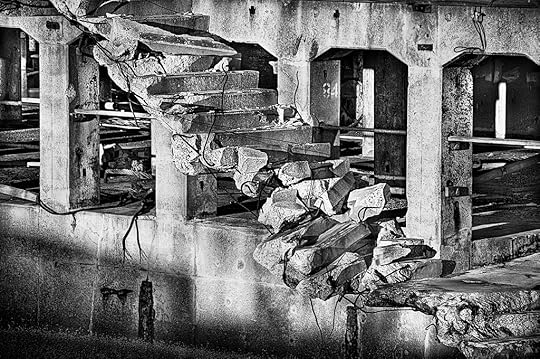
Ruined Stair © Harold Davis
In both cases, the point is to extend the dynamic range of the resulting image beyond what is normally seen in a single exposure—and, indeed, beyond normal human perception. When working in digital black and white, the tonal range is extended from the lightest lights to the darkest darks. This results in images with great graphical appeal that make for splendid monochromatic prints.
In this workshop, Master Photographer Harold Davis guides participants in both aspects of the monochromatic HDR process: shooting and post-processing.
Workshop participants will take advantage of several San Francisco Bay area locations, with field destinations to be determined depending on weather and group predilections. Possibilities include the Cable Car Museum, Fort Point, Marin Headlnds and the Golden Gate Bridge.
In the classroom, hands-on guidance will explain techniques for extending dynamic range, monochromatic conversion methods, and best practices where the two technologies intersect.
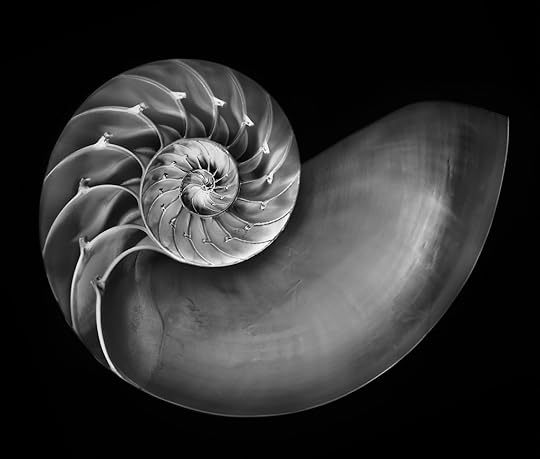
Nautilus in Black and White © Harold Davis
In addition, the workshop will provide extensive coverage of the creative vision required to successfully create monochromatic HDR images as well as the workflow necessary to make art prints from this specialized image-making technique.
When: Saturday, April 12 and Sunday, April 13, 2014
Where: The classroom session of the workshop is hosted in Berkeley, California, in a convenient location near the upscale Fourth Street shopping district and close to the University Avenue exit from I80. We will car pool to field shooting locations.
Cost: Tuition is $695 per person. Workshop is limited to a maximum of 16 participants.
Curriculum
Saturday, April 13
9 am: Orientation
9:30am: Black & White Photography in the Digital Era
10:30 am to 12:30 pm: Classroom session on multi-RAW processing and shooting and processing HDR sequences
12:30 – 1:15 Lunch break
2 to 7 pm: Field photography session(s) (Car pool, possible locations include San Francisco Cable Car Museum, Fort Point, Marin Headlands, Golden Gate Bridge, tbd)
8 pm: “Dutch Treat” Group dinner (optional, location tba)
Sunday, September 14
9 am: Classroom session, individual assignments
10 am to 12 pm: Individual assignments and field photography
12:00 – 12:45pm Lunch break
12:45 to 3:00 pm: Assignment review, classroom session covering monochromatic conversion techniques
3:30 to 4:00 pm: The high tonal range monochromatic print (special considerations and techniques)
4:30 pm: Workshop wrap-up

Kira at Passy Station © Harold Davis

January 19, 2014
Broken Arrow and Creating LAB Patterns
Wandering the pedestrian walk on new San Francisco Bay Bridge span in the waning days of the year, I shot this directional arrow, intended to guide foot and bike traffic, straight down and broken up by strong shadows from the railing.

Broken Arrow © Harold Davis
Before I converted Broken Arrow to black and white, of course, it was color (shown below). (The monochrome version is still an RGB color file technically speaking—but that’s another story!)

Broken Arrow – color © Harold Davis
It’s astoundingly easy to use Photoshop adjustments in LAB color and blending modes to create intricate patterns out of something like the color version of Broken Arrow. Here’s one example:

LAB Cross Pattern #1 © Harold Davis
To get to the pattern from the color photo, in Photoshop I duplicated the image, and converted the duplicate to LAB color mode. I next used Image > Adjust > Invert to invert the LAB color values within the file, and then converted the entire image back to RGB, with results shown below:

LAB Inversion (all channels) © Harold Davis
Next, I made another duplicate of the original image file, converted it to LAB, selected the L channel only, and inverted the L channel. I flipped the image horizontally, with results shown below:
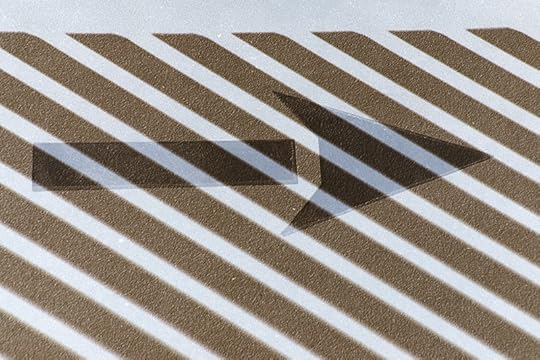
L-Channel Inversion (Flipped) © Harold Davis
The last big step is to align the two LAB inversions as layers in one image, and set the Blending Mode to Difference (by the way, they have to be back in RGB, or the Difference mode isn’t available).
There are many possible variations on this technique of course, depending on what channels you invert, how you flip the image, and what blending modes you use. Here’s another variation from the same original image:
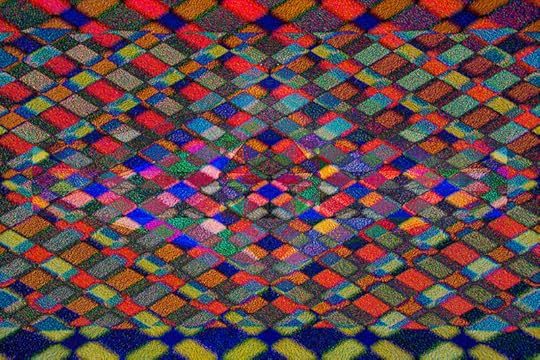
LAB Cross Pattern #2 © Harold Davis
To learn more about the LAB color techniques for creative image making I have pioneered, check out The Way of the Digital Photographer (pages 156-163) and The Photoshop Darkroom (pages 148-201). If this really intrigues you, you may want to consider my Mastering Creative Photoshop workshop (January 25-26 session full, but there is space in the second session, May 31 – June 1, 2014).

January 18, 2014
Photographing Flowers Course (with discount link)
I am proud of my online Photographing Flowers course at Craftsy.com, which by now has more than 500 students. The variety, exuberance and quality of the student projects shows that I (and the production team that worked with me) did something right in this online offering. Click here to check out my Photographing Flowers course (the course cost is normally $59.99, but by using this link you can get $10 off!).
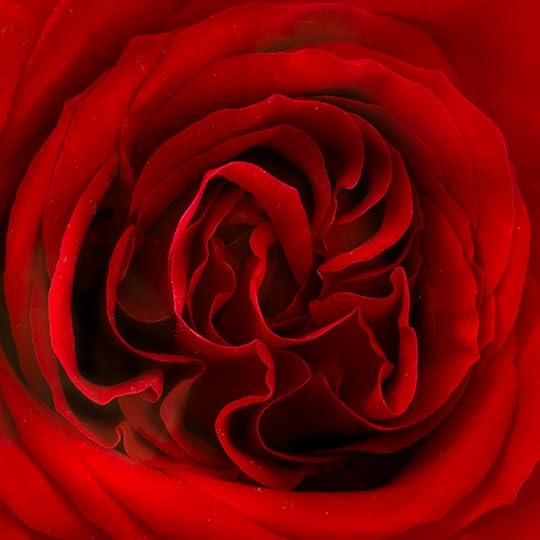
Rose center curves © Harold Davis
Here are some of the benefits of the Craftsy platform for online courses:
Craftsy classes are yours to keep–watch any time and as many times as you like. My course won’t expire, and you can watch it piecemeal, when you like, and when you want to learn about a specific subject.
Classes are interactive, so you can ask me and your classmates questions.
The Craftsy production team did a great job of making high quality videos.
Craftsy classes are filmed in high definition so technical details are easy to see.
Every class is equipped with helpful features like video notes and 30-second repeat.
You can share projects for feedback and tips,or browse for inspiration.
If for any reason you aren’t satisfied, return your class and Craftsy will refund your money.
When all is said and done, if you like to photograph flowers and want to learn more photographic technique, for $60 I think this is a pretty good deal!
Click here to check out my Photographing Flowers course (the course cost is normally $59.99, but by using this link you can get $10 off!).

January 17, 2014
Learn Photoshop This Year!—Second Session by Popular Demand
The first session of Mastering Creative Photoshop is sold out…and so many people have asked for another session. Here it is!!! The dates are Saturday May 31 – Sunday June 1, 2014. To avoid disappointment, please register well in advance.
Make this the year that you finally learn Photoshop!
It’s time to bend Photoshop to your creative will. Whether you want to enhance your existing digital workflow, create black and white images with high tonal range, or composite incredible and fantastic landscapes from disparate elements, stop fighting Photoshop—and make Photoshop your creative ally and partner!
Kick off this resolution by reading Harold Davis’s acclaimed books about Photoshop’s creative side: Monochromatic HDR Photography, The Way of the Digital Photographer, The Photoshop Darkroom, Creative Black & White, and other titles.
And if you’re really ready to go for it, bring your creative Photoshop ideas to Harold’s unique seminar in January, Mastering Creative Photoshop: The Way of the Digital Photographer. There will be plenty of time for individual attention. Guaranteed: you will learn Photoshop. And your photography will never be the same!
So enough dithering! Make your Photoshop resolutions come true! If not now, when?
Workshop Description: Mastering Creative Photoshop: The Way of the Digital Photographer—This workshop covers developing a personal digital Photoshop workflow. Topics explained in detail include archiving and checkpoints, RAW processing, multi-RAW processing, HDR, hand-HDR, stacking, LAB color creative effects, monochromatic conversions, using backgrounds and textures, layers, layers masks, working with channels, Photoshop filters, and plugins from Nik Software and Topaz. If you’ve ever wondered how Harold does it, or wanted to learn how to incorporate his techniques in your own digital workflow, this is the workshop for you!
Dates: The January session of Mastering Creative Photoshop is sold-out. This newly added session will be held Saturday May 31 – Sunday June 1, 2014
Location: Berkeley, California. The workshop will be held at the MIG Meeting Room, which is a very nice space co-located with a well-known green urban design firm in Berkeley, CA and conveniently located near the Fourth Street shopping district, the Berkeley Amtrak station, and the University Ave exit from Interstate 80.
Space Availability: Class size is strictly limited to 16 to permit individual attention. To avoid disappointment please do not delay.
Tuition: $695.00 per person for the entire weekend.
Registration: Click here for more information and to register.
About this image: One of my heros, the great painter Vincent van Gogh, spent his last days in the village of Auvers-sur-Oise outside Paris, France, where he painted many of his great works. Wandering the streets of Auvers-sur-Oise, now a suburb of Paris, I found many signs reproducing a van Gogh painting in front of the literal scene that he painted.
It seemed to me that it would be fun to create an image that showed an impressionistic image like the ones that van Gogh created on one side of the frame, along with a photographic capture of the signage showing the image. To implement this thought, I created a bracketed sequence of exposures, which I combined and manipulated using Photoshop and plugins from Nik Software and Topaz.
About Harold Davis: Harold Davis is an internationally-known digital artist and award-winning professional photographer. He is the author of many photography books. His most recent titles are The Way of the Digital Photographer (Peachpit) and Monochromatic HDR Photography (Focal Press).
In addition to his activity as a bestselling book author, Harold Davis is a Moab Master printmaker and a Zeiss Lens Ambassador. Harold Davis’s work is widely collected, licensed by art publishers, and has appeared in numerous magazines and other publications. His black and white prints are described as “hauntingly beautiful” [Fine Art Printer] and his floral prints have been called “ethereal,” with a “a purity and translucence that borders on spiritual” [Popular Photography].
Harold Davis leads popular technique and destination photography workshops to many locations including Paris, France; Heidelberg, Germany; and the ancient Bristlecone Pines of the eastern Sierra Nevada.

January 13, 2014
Working with my mobile “fun” camera
Saturday was a gray and moist day in Berkeley, California. I took the kids out to a playground up higher in the coastal range, and all of a sudden we were in the middle of a cloud, with light but persistent precipitation. While the kids played in the sand, I used the camera app on my iPhone to snap a photo of the eucalyptus trees in the fog.

Virage © Harold Davis
Standing under a sheltering tree, I processed the image on my iPhone in about five minutes, using Filterstorm, Plastic Bullet, and the 60s Square Virage filter from Lo-Mob.
I don’t think my need for high resolution, an optical viewfinder, and a variety of “real” lenses is likely to be satisfied anytime soon by my iPhone camera—but what you can do on a mobile “fun” is great and pleasing in its own right!
About the time I finished processing, the day grew even wetter—and by parental fiat we decided to bag the playground before everyone got soaked to the bone.

January 11, 2014
Through a glass lightly
I lit a passion flower (passiflora) from the rear and left, so that the light reflected off the flower onto the neck of a glass bottle with a rather tall neck. I used a telephoto macro lens (200mm) to shoot the passiflora through the neck of the glass bottle. My idea was to focus on the refraction of the flower projected onto the glass rather than the flower itself. I used a moderate aperture (f/10) for some depth-of-field—enough to make the refraction of the flower in the glass seem to be in focus, but not enough for the actual flower in the background to seem sharp.

Passiflora through a bottle © Harold Davis
What makes this image interesting is the inversion of normal visual expectations. In other words, the contrast between the “straight” flower in the background—which is normal and ordinary, but not in focus—and the distorted flower in the glass—which is contorted and extraordinary, but in focus—is unusual. We normally expect to see our “straight” things crisp and in focus, and our weird, dream-like things out-of-focus and, well, dream-like.

January 8, 2014
Temple Flags
The temple flags shown in this image are along the steps leading up to the grand shrine of Kumano Hongu Taisha located in Tanabe, Japan on the Kii peninsula in Wakayama Prefecture. This temple has been one of the most important centers of the Shugendo Buddhist faith for more than 1,000 years.

Temple Flags © Harold Davis
My idea was to create a mystical, ghost-like image. I wanted to use the natural motion of the flags in the wind to create a soft effect, with the forest landscape in the background partially “peeking” through. To make this image, in the gathering twilight, I put my camera on my tripod, and dialed down the ISO as low as possible (to ISO 50).
With my ISO set low, I next picked a small aperture (f/22). At ISO 50 and f/22, an eight second exposure was about right—which created the flowing and soft otherworldly effect I wanted.

January 6, 2014
Coming into the new year with my books
 Coming into the new year, I’m delighted that my recent titles are doing well. The Way of the Digital Photographer from Peachpit has been named a best photo book of 2013 by Photo.net. Over on Amazon, there are many positive reviews. For example, Charlotte McBroom writes, “Chock full of excellent information. There are many useful tools and methods of usage. I recommend this book to everyone interested in photography.”
Coming into the new year, I’m delighted that my recent titles are doing well. The Way of the Digital Photographer from Peachpit has been named a best photo book of 2013 by Photo.net. Over on Amazon, there are many positive reviews. For example, Charlotte McBroom writes, “Chock full of excellent information. There are many useful tools and methods of usage. I recommend this book to everyone interested in photography.”
Monochromatic HDR Photography from Focal Press has also been well received. A Fine Art Printer Magazine review calls attention to “the very high image quality and the excellent text. The subject of the book is the combination of two photographic trends: HDR photography and black and white….These insights are illustrated by hauntingly beautiful black and white images.”
On Amazon, reviewer Larry Goldfarb notes that “while the title invokes the world of HDR photography, this book is really bigger than that, it’s about light and tonal depth. Other than subject matter, that’s photography. The author presents a variety of methods for exploring and expanding your ability to adjust both.”
 In Horizon, a computer users newsletter, Mark Mattson writes, “When I read through this book for this review, I learned a lot about how I should be doing things, to get the images I really want to show. A lot of the concepts I’ve known now for some time, but just haven’t made the connection to monochrome. With Harold and this book I now have a guide to show me the way on this new journey.”
In Horizon, a computer users newsletter, Mark Mattson writes, “When I read through this book for this review, I learned a lot about how I should be doing things, to get the images I really want to show. A lot of the concepts I’ve known now for some time, but just haven’t made the connection to monochrome. With Harold and this book I now have a guide to show me the way on this new journey.”
I’m glad many photographers have found my books inspiring and useful. Thanks everyone who has taken the time to write a review, it is greatly appreciated—and helps me to continue doing what I do!

January 5, 2014
My best of 2013
As an exercise, and also to participate in a compendium of “best of” blogged photos, I’ve put together what I think are my best photos from 2013. This has been an exciting and varied year of photography for me, with locations both abroad and at home.
It’s never an easy job editing one’s own photos. My favorite photo is always my next one! I love them when I make them, but then they fall out of favor, and it takes a while before I can see them clearly. You have to let go of the feelings you had when you took the image, and begin to view them objectively: often not the easiest thing to do.
I also had a problem of definition: does an image made in 2013 count, or does it have to be photographed in 2013? This is an issue for me because many of my images are made from photos shot in earlier years. For the sake of this collection, I am sticking with images using only photos shot in 2013 (I have no shortage of those!), but this does mean omitting some composite imagery that I like.
How do you compare apples to oranges? Are you in the mood for botanicals or landscapes? This is all very subjective, but basically these are my picks (with a little input from Phyllis). I also used favoriting on Flickr as a data point (but certainly didn’t rely solely on Flickr feedback). What do you think? Which are your favorites? Have I omitted an image of mine that should be included (or vice versa)?
Herewith, the Harold Davis best of 2013 (in alphabetical order):

Anemones 1 © Harold Davis

Bixby Bridge by Starlight © Harold Davis

Cayucos Pier © Harold Davis
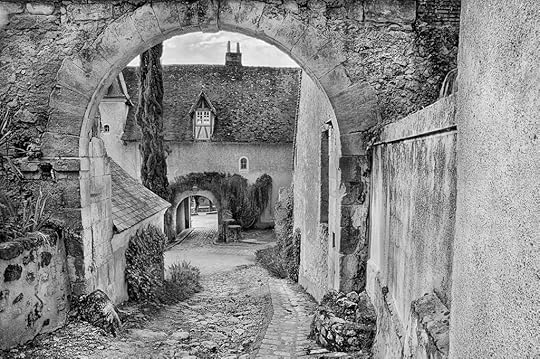
Chateau des Nazelles © Harold Davis
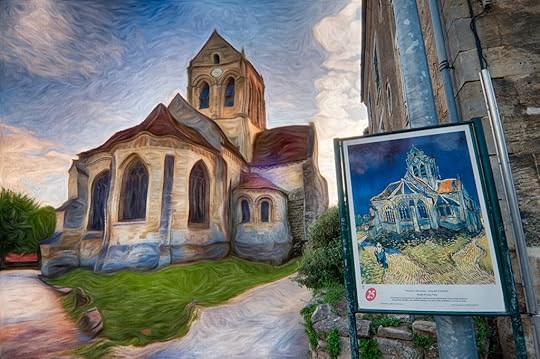
Church at Auvers © Harold Davis
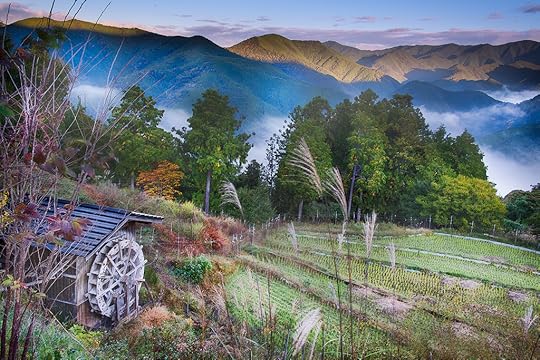
Dawn in the High Fields © Harold Davis

Dawn of the Dragon © Harold Davis
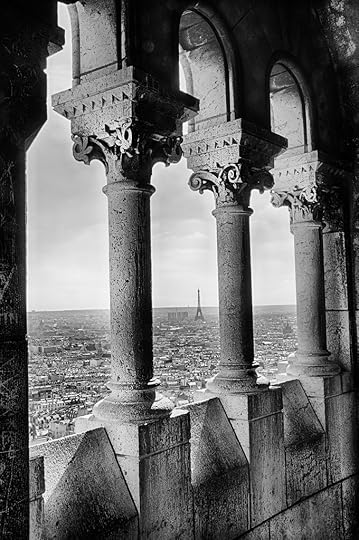
Eiffel Tower from Sacre Couer © Harold Davis
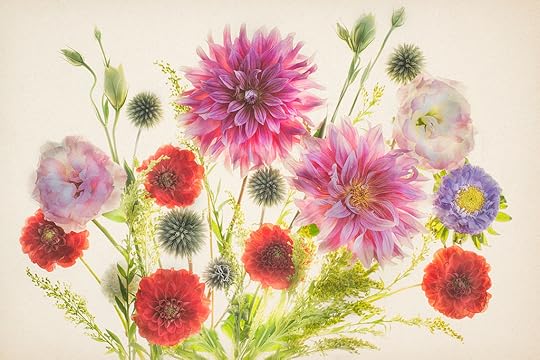
Flowers of Late Summer © Harold Davis

Kumano Sanzen Roppyaku Po © Harold Davis

Lights of Paris © Harold Davis

Kira at Passy Station © Harold Davis
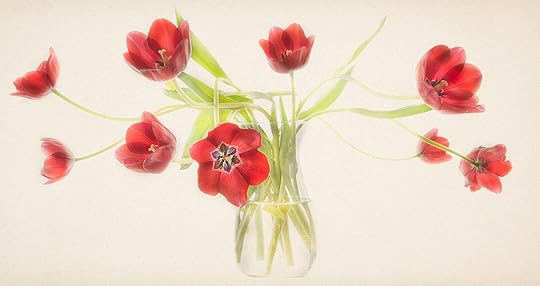
Red Tulips in a Glass Vase © Harold Davis

Rose Center Curves © Harold Davis
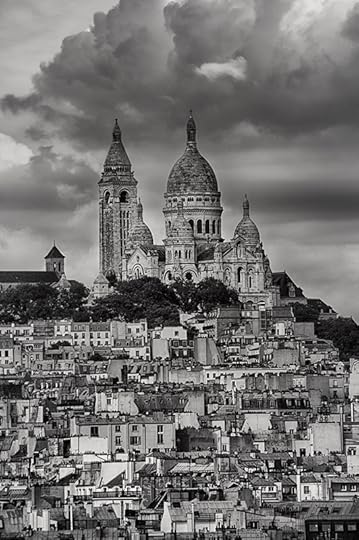
La Basilique du Sacré Cœur © Harold Davis

Story of O © Harold Davis

Tulip Within © Harold Davis

Waves on Drakes Beach © Harold Davis






